Not just an empty buzzing term, but a true savior indeed!
Augmented reality or AR has become a growing trend among various sectors and experienced a humongous growth especially in healthcare.
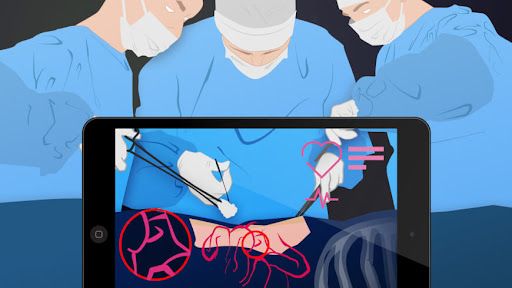
The above illustration is the perfect example of how instead of searching through papers about the medical information of the patient, the doctors are actually using AR to find all data and medical information of the patient.
AR has been a BOON for the healthcare sector and here’s how.
AR In Healthcare Industry (Over The Years)
By the end of 2024, there were at least 1.73 billion AR devices will be active.

Insane right?
Supporting the above figures, new innovations are entering the market every day to make augmented reality a more user-friendly tool. In the future, it is expected for AR to play a vital role in the healthcare industry and shift its dynamics completely.
Applications of Augmented Reality in the Healthcare Industry
It is not hidden, that AR has had a huge impact in the healthcare industry. But the question arises, is it still on the top, despite all its ups and downs in the industry?
Well, that is one question that only time will tell. But in my personal opinion this technology is waiting for the next bigger innovation to push it another step higher.
Let’s see what all is possible when the AR steps into healthcare.
In Surgeries
Ever came across the video where Brazillion surgeons assist in spinal surgery with the help of AR?
Check out the video
With the help of AR surgical procedures are much safer than ever. Doctors and specialists can assist with all the necessary information for saving a patient’s life.
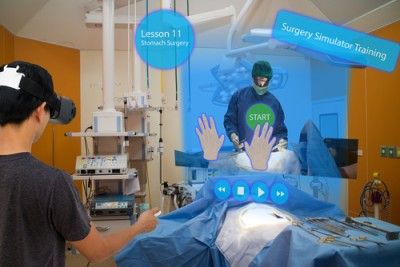
Undoubtedly, this helps minimize risks and reduce the waiting time and surgical processes are shortened dramatically.
Locating nearby Defibrillators
What will be your first reaction if a person standing next to you collapses? You would obviously take out your phone to ask for help. But, what if I tell you that with the help of AR you can actually save somebody’s life with just your phone.
Intriguing right?
So the gist is, applications such as AED4EU (created by Lucien Engelen) help users determine the nearest places where automated external defibrillators (AEDs) are located.
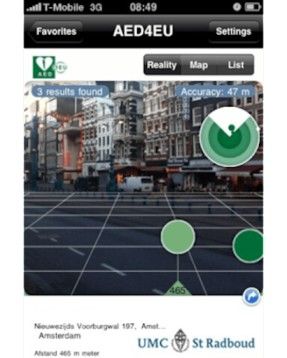
Other than the location, the volunteers of the app confirm the availability or functionality of the AED immediately which helps to know whether that particular AED is working or not.
Help patients describe their symptoms better
Some patient’s exaggerate whereas some belittle the problem!
It’s always a struggle describing your symptoms to the doctor especially when you cannot afford to pay him a visit. Certain AR build apps help stimulate the impact of specific conditions on a person.

This gives the patients better understanding of their actual medical state and symptoms and also the courage to improve their lifestyle.
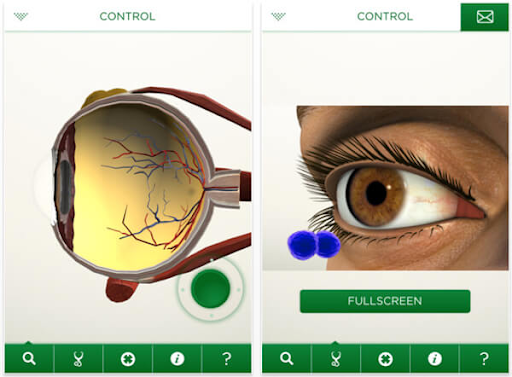
Oculenz, for example, helps patients suffering with vision loss. Doctors can actually show the patient suffering the stimulation of their condition.
Help new mothers with breastfeeding
Small World (Melbourne-based company) conducted a trial with Google glass in collaboration with the Australian breastfeeding Association. In the trial, doctors could actually see the mothers while they breastfed at their home in real time.

This helps struggling mothers get some expert help throughout the day. And the best part is, the mothers didn’t have to leave their child for even a second.
Collab between the physicians
AR definitely comes handy in the worst case scenarios. What if the general surgeon is miles away? Trust me they can still save lives, just with the help of AR. The surgeon can guide the specialist through AR and give instructions.
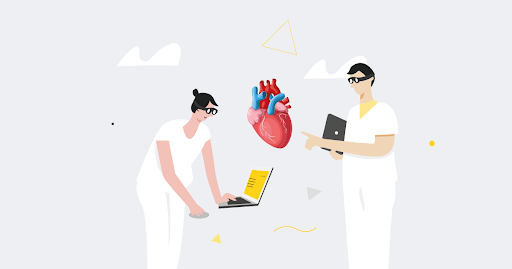
They can even conduct collaborative surgeries and effective meetings on any issues and the option of video conferencing is always available.
AR is a live savior!
Easier for nurses to find veins
The new innovation is helping both the patients and nurses. How? Well, AccuVein (a start-up firm) has launched a new project wherein AR is used to project a scanner on the skin and shows the veins in the patient’s body.
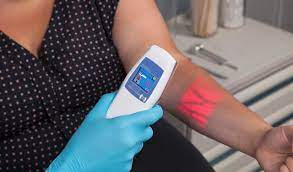
This technology has been used for more than 10 million patients. It helps in finding a vein within the first stick and is more accurate then the conventional methods.
Helps with the study of Anatomy
Ever wished to simplify the visuals of the human body? AR turned it into reality!
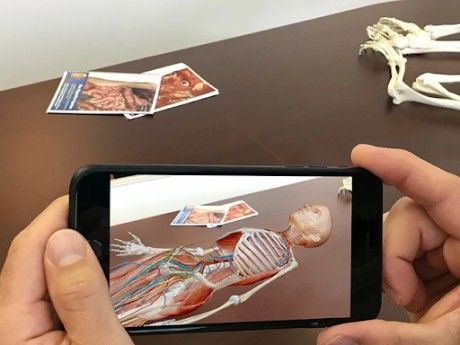
The HoloAnatomy app is one such example which helps to visualize the human body in a spectacular yet simple way. From the smallest veins to muscle everything can be seen dynamically that too in 3D.
Seeing the rapid growth, it’s not far that AR takes over the market in a more surprising way, targeting a huge population throughout the world. Get ready to explore an altogether new world of AR.
Frequently Asked Questions and Answers
Ques: Is AR technology safe to use in healthcare settings?
Ans: Yes, when properly developed and implemented, AR technology is safe and can enhance patient care and medical procedures. However, it is crucial to adhere to regulatory standards and ensure that the technology is used by trained professionals.
Ques: Can AR improve patient outcomes?
Ans: Yes, AR can improve patient outcomes by providing more accurate diagnoses, enhancing surgical precision, and enabling better patient education. This leads to more effective treatments and overall improved patient care.
Ques: What are the challenges of implementing AR in healthcare?
Ans: Key challenges include:
- Cost: High expenses for development and implementation.
- Data Privacy: Ensuring patient data is protected.
- Training: Need for extensive training to effectively use AR technologies.
- Integration: Difficulty integrating AR with existing medical systems.
Ques: How does AR benefit the healthcare industry?
Ans: AR provides several benefits, including improved surgical precision, enhanced patient education, more efficient training for medical professionals, and better diagnosis and treatment planning. It helps healthcare providers visualize complex information and improve patient outcomes.

